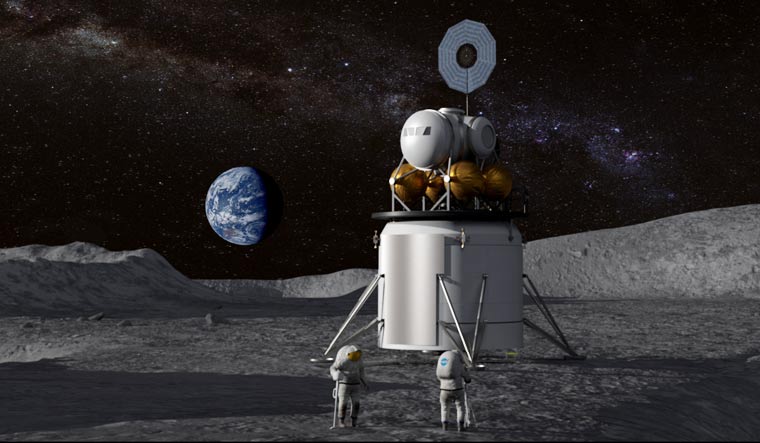When NASA landed astronauts on the moon for the first time in 1969, it was the result of over a decade's worth of research, collaboration and procurement involving both the public space agency as well as American private industry.
Now, NASA has selected the 13 companies it intends to partner with for the 2024 moon landing mission, Artemis, which aims to put "the first woman and the next man" on the moon. It is a list that combined Elon Musk's SpaceX with Jeff Bozos's Blue Origin, as well as established players in aerospace like Lockheed Martin and even new technology companies like Aerogel Technologies.
In a press release, NASA said that they would "partner with the companies, which range from small businesses with fewer than a dozen employees to large aerospace organizations, to provide expertise, facilities, hardware and software at no cost."
Each company would work on a different aspect of the mission. SpaceX would be working with the "NASA’s Kennedy Space Center in Florida to advance their technology to vertically land large rockets on the Moon" as well as with Glenn and Marshall for technology "needed to transfer propellant in orbit."
Blue Origins would be working on "maturing" navigation and guidance systems, fuel cell power systems, and on high-temperature materials for liquid rocket engine nozzles for the moon lander.
Lockheed Martin would work with NASA’s Langley Research Center to "test materials made from metal powders using solid-state processing to improve the design of spacecraft that operate in high-temperature environments."
In addition, the following companies will also work with NASA on different aspects of the mission: Advanced Space, Vulcan Wireless, Aerogel Technologies, Spirit AeroSystem Inc., Anasphere, Bally Ribbon Mills, Sierra Nevada Corporation, Maxar Technologies, Glenn and Johnson, Aerojet Rocketdyne and Colorado Power Electronics Inc.
ALSO READ
- Elon Musk and back-to-back rocket missions: When and where to watch the last SpaceX launch of 2024 LIVE
- SpaceX buyback deal, Trump win, Tesla stock jump: Elon Musk’s net worth crosses USD 420 billion
- 5 stars emerge in NASA Space Apps Challenge: Kerala, Karnataka, Gujarat, Maharashtra, and Ladakh entries earn laurels
NASA will help these companies with expertise and resources at zero cost, in a bid to grow advancements in their respective fields. A 2017 NASA solicitation had called for private sector participation with an eye on advancing technologies that were at a "tipping point," promising significant advancement if given investment and demonstration.
Even during the Apollo moon landings, NASA had worked extensively with the private sector. NASA increased the participation of private contractors in its workforce by a factor of ten between 1960 and 1965, with 376,500 private contractors working on the project by the middle of the decade.
Artemis I will launch to test the SLS rocket and the Orion spacecraft. Artemis II will send the first humans to orbit the moon in the 21st century, and Artemis III will land humans on the moon.


